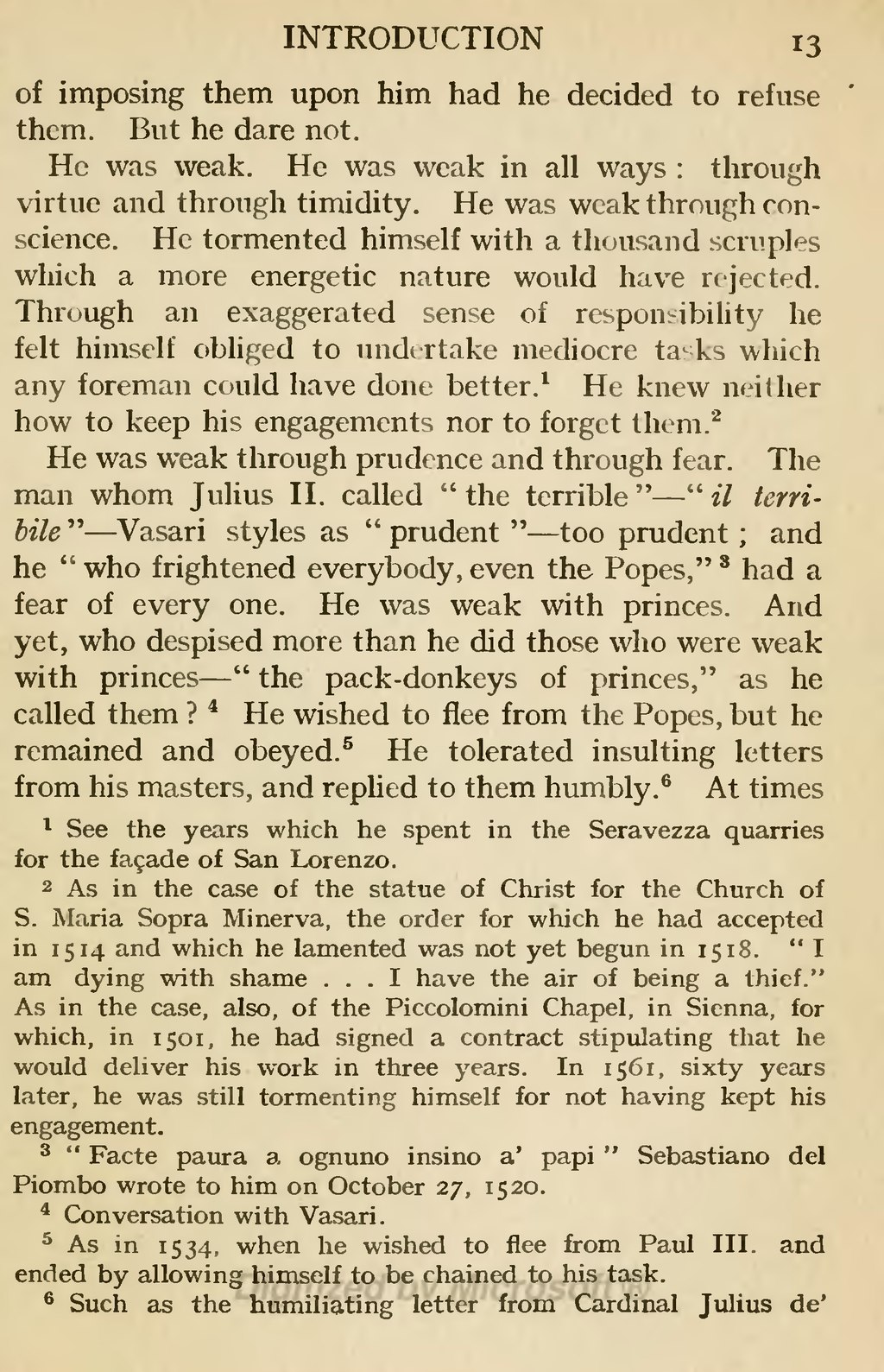of imposing them upon him had he decided to refuse them. But he dare not.
He was weak. He was weak in all ways: through virtue and through timidity. He was weak through conscience. He tormented himself with a thousand scruples which a more energetic nature would have rejected. Through an exaggerated sense of responsibility he felt himself obliged to undertake mediocre tasks which any foreman could have done better.[1] He knew neither how to keep his engagements nor to forget them.[2]
He was weak through prudence and through fear. The man whom Julius II. called “the terrible”—“il terribile”—Vasari styles as “prudent”—too prudent; and he “who frightened everybody, even the Popes,”[3] had a fear of every one. He was weak with princes. And yet, who despised more than he did those who were weak with princes—“the pack-donkeys of princes,” as he called them?[4] He wished to flee from the Popes, but he remained and obeyed.[5] He tolerated insulting letters from his masters, and replied to them humbly.[6] At times
- ↑ See the years which he spent in the Seravezza quarries for the façade of San Lorenzo.
- ↑ As in the case of the statue of Christ for the Church of S. Maria Sopra Minerva, the order for which he had accepted in 1514 and which he lamented was not yet begun in 1518. “I am dying with shame … I have the air of being a thief.” As in the case, also, of the Piccolomini Chapel, in Sienna, for which, in 1501, he had signed a contract stipulating that he would deliver his work in three years. In 1561, sixty years later, he was still tormenting himself for not having kept his engagement.
- ↑ “Facte paura a ognuno insino a’ papi” Sebastiano del Piombo wrote to him on October 27, 1520.
- ↑ Conversation with Vasari.
- ↑ As in 1534, when he wished to flee from Paul III. and ended by allowing himself to be chained to his task.
- ↑ Such as the humiliating letter from Cardinal Julius de’
